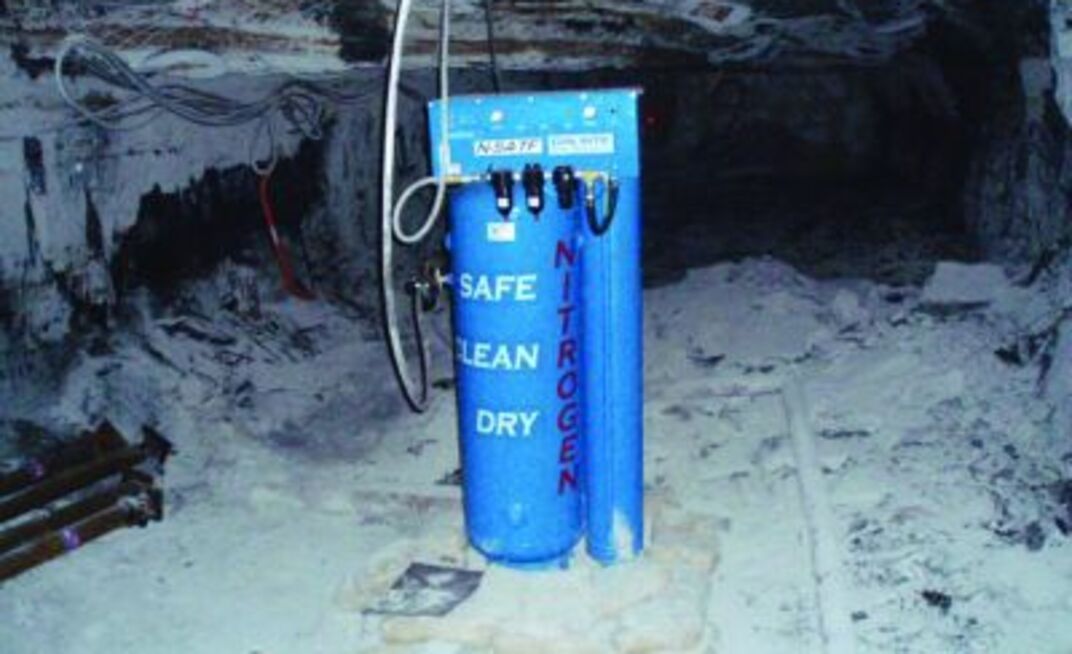Published in the May 2008 Coal USA Magazine
On Site Gas, with a long-standing focus on underground atmospheric inertization, has worked both in suppression/prevention and condition maintenance behind seals – where the changes in regulations have placed a greater emphasis. The MINER Act hasn’t changed the company’s focus, but rather revealed a long-term need for manpower and equipment, according to On Site Gas sales vice president Robert Wolff.
“We have increased the amount of physical inventory and have added additional technicians to keep up with customer demand for inerting due to the … changes. We have always been committed to providing nitrogen inerting service to the mining industry, and will continue to expand and grow our services due to the increased needs of the mining community.”
According to consultant Tom Mucho of Tom Mucho and Associates in Pennsylvania, who is working with On Site Gas on some of its recent projects, the need for companies in the sector to make adjustments for demand and increasing technology is not isolated to a few. This is parallel to the need seen from operators who are placing an unprecedented priority on emergency response and preparedness plans to remain in state and federal compliance – efforts which, for many, have caused mines to also devote more time and resources than ever before.
“While not a trend, development of new concepts to suppress mine fires early, such as in-mine inert gas generation or in-mine inert foam generation capability, has received favorable response from top mine safety officials,” Mucho said of the feedback he has received from client operations.
“Fast, direct application of suppressants to the problem area is obviously viewed as advantageous over current direct fire fighting techniques,” he said, citing as an international example the planned potential for a fire suppression gel to be used in spontaneous combustion-related heating events in Australia.
Regardless of the mine or operator, no one will argue the fact that saving lives, money, time and the environment are all significant, and Wolff said that keeping On Site Gas’ technology close at hand onsite will be key in ensuring those factors are met.
“We believe there is the need to have nitrogen closer to the point of use, with the ability for redeployment to other parts of a mine on fairly short notice,” he said.
With quick turnaround to bring the situation under control, production can often continue more rapidly and the likelihood of saved lives, money and time is increased exponentially.
Moving ahead in the research and development department, On Site Gas said its focus on technology and equipment is greater than ever before. This includes methods of inertization from above ground with the use of membranes and Pressure Swing Adsorption (PSA) technology, a system which permits greater nitrogen flow using less feed air, which will reduce the cost of generating nitrogen.
“We currently have smaller PSA systems located below ground,” noted Wolff. “These systems are located close to the seal and pump nitrogen through the seal into the sealed area.”
The research world is also taking notice. “The Mine Improvement and New Emergency Response Act of 2006 (MINER Act) permanently established the Office of Mine Safety and Health Research within the NIOSH under … Dr Jeffery H Kohler,” according to agency researcher Mike Trevits, who is working with On Site Gas on a new method for underground intertization.
“The MINER Act authorized the office … to award competitive grants and contracts to institutions and private entities to encourage the development and manufacture of mine safety equipment and to award contracts to education institutions or private laboratories for the performance of product testing or related work with respect to new mine technology or equipment. This work was funded under a Broad Agency Announcement to conduct research, exploratory development, testing, or evaluations of new technologies to improve mine safety, or to adapt technologies from other industries for application in mining environments that could result in improved safety for mine workers.”
Added Wolff of the project: “We are developing a new style of PSA nitrogen generator that will have the physical characteristics to match the requirements of the mines, allowing the system to be transported and used underground. [It] will allow for a higher flow of nitrogen to be produced than from the traditional PSA system of the same size, underground, eliminating the need for running piping down from the surface or drilling bore holes.”

























